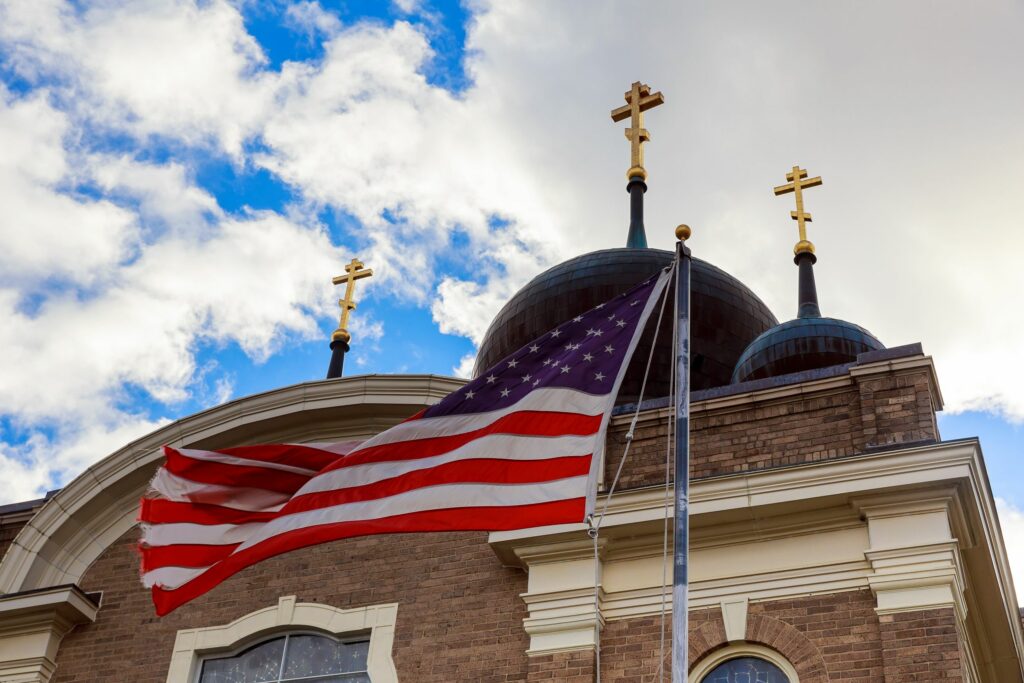Matthew Niermann
California Baptist University, Riverside California
mniermann@calbaptist.edu
Introduction
In the United States of America, Evangelical Protestantism is the largest religious population by percentage[1], and consequently has had a major influence on religious practice in America – including an influence on religious building trends. Stemming from the coalescence of distinctive emphasis on evangelism and outreach, use of sociological tools to aid outreach, and denial of sacrality of space, Evangelical Protestantism has frequently populated the religious built landscape in America with church architecture intentionally designed via secular architecture typologies.
This trend is historically rooted in the 1970’s work of Evangelical missiologists who developed an outreach theory known as Church Growth Theory[2] which, in part, put forth the homogeneous unit principle; the idea that individuals are more likely to convert to Christianity if they do not have to cross any cultural or sociological barriers to do so. Pastors and architects subsequently applied this theory to church design, proposing that church architecture must aim to reduce any cultural barriers in order to reach the unchurched.[3] This architectural theory, known as architectural evangelism, prescribes the removal of religious symbolism and recognizable ecclesiological markers – which can be barriers for unchurched – and proposes the use familiar secular typologies – which the unchurch would be familiar with.
The adoption of architectural evangelism is motivated by an evangelistic impulse to ease the unchurched from non-belief to belief[4]. Yet the practitioners of this approach are primarily focused on local contexts, with-out focused consideration of potential effects on the larger societal perceptions, plausibility, or belief structures sometimes referred to as the ‘sacred canopy’. As famed sociologist Peter Berger observes, religious practice participates in a dialectic process of world shaping which includes a process of the externalization of religious beliefs, which is then objectified for all, followed by individual internalization of these beliefs. [5][6] With this observation, the question is raised as to how the lack of recognizable externalization of religious belief via architecture could affect, or possibly hinder, the eventual internalization of beliefs.
Research Method
To explore this question, this research project utilizes quantitative research methods to explore whether exposure to varying church architecture, namely architectural evangelism church design and traditional protestant church design, effects the belief plausibility structures of Christianity in America. Specifically this research utilizes the understanding of decision heuristics and in particular the understanding of how the priming effect can alter our decision-making.6 The priming effect is a psychological observation whereby individuals’ exposure to a stimulus influences a response to a second stimulus. Ultimately, this research study examines 1) whether church architecture has a priming effect on individual’s perception of the current standing of Christianity in America (e.g. self-identification, worship participation, growth or decline) and 2) whether architectural evangelism driven designs vs. prototypical ecclesial designs vary in their priming effect.
The research study included 200 participants demographically divided equally by gender and church participation; evenly distributed between seven age brackets ranging from 18 to 79; and evenly drawn from six major geographic regions in the United States. Participants watched a 30second video filmed from the inside of a car driving down a street. Three variants of the video was randomly assigned to participants 1) video passing recognizable church structures; 2) video passing non-recognizable church structures (i.e. architectural evangelism churches); 3) video passing commercial buildings. Following, individuals where asked five questions about their perception of the status of Christianity in America.
Outcomes
Statistical analysis of the data explored the occurrence of priming effects related to the variant exposures. Results found statistically significant variation in reported perceptions of the status of Christianity based on the variant video exposures, and no statistically significant variation based on gender, church attendance, age, or geographic region. Notably participants exposed to the video of recognizable church structures, responded to the questions with higher rates perceived status (self-identification, worship participation, growth or decline) of Christianity in America.
Although the study of these questions require more robust and nuanced research, this initial exploratory study suggests that church architecture may hold a priming effect on individual perception of the status of Christianity in America – thus suggesting that recognizable ecclesial forms may support religious belief plausibility structures at the societal level. Therefore, the practice of utilizing secular typologies for church architecture advocated by architectural evangelism may ultimately be undercutting belief plausibility structures for unchurched – effectively inhibiting their path to belief.
References
David Kahneman. Thinking Fast and Slow (New York: Farrar, Straus, and Grioux, 2015).
Donald McGavran. The Bridges of God: A Study in Strategy of Missions (New York: Friendship Press, 1955).
G. Pritchard. “The Strategy of Willow Creek: A Study in Sociology of Religion.” Ph.D. Diss., Northwestern University, 1994.
Peter Berger. The Sacred Canopy: The Social Reality of Religion (London: Faber & Faber, 1969).
Pew Research Center. “Religious Landscape Study” http://www.pewforum.org/religious-landscapestudy/#religions (Accessed Feb 10, 2019).
Tom Rainer, Surprising insights from the Unchurched and Proven Ways to Reach Them, (Grand Rapids: Zondervan, 2001).
[1] Pew Research Center, “Religious Landscape Study,”Accessed Feb. 10, 2019. http://www.pewforum.org/religious-landscape-study/#religions
[2] Donald McGavran, The Bridges of God, (New York: Friendship Press, 1955)
[3] G. Pritchard, “The Strategy of Willow Creek Community Church” (Ph.D. Diss, Northwestern University, 1994), 287.
[4] Tom Rainer, Surprising insights from the Unchurched and Proven Ways to Reach Them, (Grand Rapids: Zondervan, 2001).
[5] Peter Berger, Sacred Canopy, (London: Faber & Faber, 1969).
[6] David Kahneman, Thinking Fast and Slow, (New York: Farrar, Straus, and Grioux, 2015)




